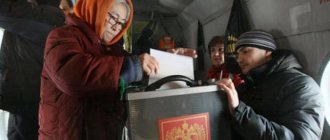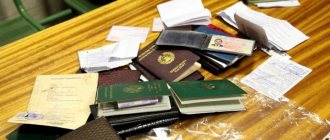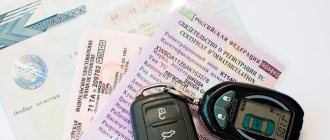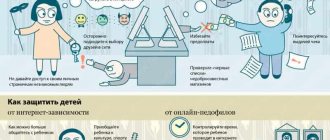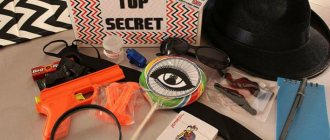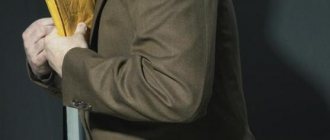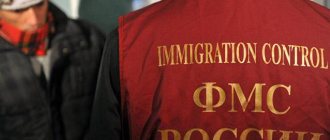The purpose of document inspection
is to establish the circumstances and facts stated in them that are relevant to the case, as well as to identify and record traces of the crime. When investigating criminal cases, various documents, any written acts and records can have evidentiary value: orders, invoices, checks, certificates, personal letters, notes, draft notes, etc.
“Other documents” are admitted as evidence if the information contained in them is important for establishing the circumstances to be proven. If documents were a means of committing or concealing a crime, objects of criminal actions, or retained traces of a crime or a criminal, they are “material evidence.”
Documents - material evidence can be:
- checks, invoices, invoices, receipts, etc., forged in whole or in part (by additions, corrections, etc.), used to commit or conceal theft;
- IDs, certificates, certificates, etc., falsified in whole or in part, used to obtain any benefits or for other criminal purposes;
- letters or notes used in the preparation and commission of a crime, in concealing stolen property, etc., revealing certain circumstances of the crime;
- various documents executed by the subject of the crime, belonging to him, found at the scene of the incident or discovered during a search and allowing to establish the identity of the criminal, the fact of his presence at the scene and other circumstances;
Documents seized at the scene of the incident, selected during a search, etc., must be examined immediately on the spot, and if this is impossible for some reason - in the investigator’s office, after being delivered there in a sealed form, and attached to the case by decree investigator.
A protocol is drawn up regarding the inspection of documents, which necessarily records the results of the general inspection of the documents, and, if possible, the results obtained when using special inspection techniques. If necessary, specialists are invited to participate in the inspection of documents.
Questions resolved during inspection of documents
At the initial stage of the inspection, the investigator should obtain a general understanding of the document. A general inspection of documents is an inspection for the purpose of studying and recording the general characteristics of documents, their appearance and main features. During a general inspection of documents, the following are examined:
1. Type and content of the document: certificate, invoice, personal letter, note, etc., by whom and to whom it was issued or addressed, what is stated in the document (the contents should be given in full in the protocol, or the beginning and end phrases of the text, or general meaning of the document), date and document number.
2. What the document was executed on: on a sheet of writing paper, wrapping paper, etc., on a form - printed using a typographic method, using a PC printer, on a typewriter, handwritten; the dimensions of the document are determined.
3. How the document or its individual parts were executed: using a PC printer, printed on a typewriter, using carbon paper or a photocopier, with paste, ink, pencil (specify color), etc.
4. If there are impressions of seals (stamps): their color, shape - round, rectangular, triangular; type - stamp of the official seal, seal for packages, for internal business documents, etc.; inscription text in prints; indicate features (paleness and blurriness of prints, mirror images of letters and characters, etc.).
5. If there are signatures: on behalf of whom they are designated, their transcription (structure), how they were executed, features of execution.
6. Other features of the document: folds, dirt, traces of stitching and gluing, filled-in or crossed-out areas, imprints of calendar stamps, as well as grammatical errors and other irregularities in the text, absence of imprints and stamps, etc.
The content of the investigator's further actions when examining a document is a special forensic examination of documents and depends on what supposed role this document may play in the case: a means of certifying certain facts and circumstances or material evidence. Special forensic examination of documents is an examination of documents using special techniques and means.
Inspection and its types. Survey
Inspection
consists of examining various objects by the investigator and other subjects of the criminal process to detect traces of a crime and clarify other circumstances relevant to the criminal case (Article 176 of the Code of Criminal Procedure).
Inspection is a general concept that covers specific types of inspection: the scene of an incident, terrain, premises, objects, documents, corpse.
All inspections are carried out, as a rule, with the participation of at least two witnesses, with the exception of cases of inspection in hard-to-reach areas in the absence of appropriate means of communication, and also if the investigative action is associated with a danger to the life and health of people (Part 4 of Article 170 of the Code of Criminal Procedure ).
Inspection of the scene of the incident.
The scene of an incident means a room, other object or area of the area where the event under investigation occurred, or another place accepted at the beginning of the investigation as the scene of the crime.
Inspection of premises
as an independent investigative action is carried out only in cases where the premises are located outside the scene of the incident.
An inspection of a home
can only be carried out with the consent of the persons living in it or on the basis of a court decision. Housing means an individual residential building with its residential and non-residential premises, residential premises, regardless of the form of ownership, included in the housing stock and used for permanent or temporary residence, as well as other premises or buildings not included in the housing stock, but used for temporary residence (clause 10, article 5 of the Code of Criminal Procedure).
Inspections of objects and documents
are carried out directly during the inspection of the scene of the incident, premises or areas of the area. They act as separate actions when there is a need to examine objects or documents outside the investigative action that resulted in their discovery or seizure, as well as when objects and documents are presented to the investigator at his request or on the initiative of citizens, organizations, enterprises, institutions .
Examination of the corpse
carried out by the investigator at the place of its discovery, which may be the scene of the incident. As an independent investigative action, an examination of a corpse can be carried out when, before the arrival of the investigator, the corpse is moved from the place of its discovery to a morgue, hospital or some other place.
The corpse is examined with the participation of witnesses, a forensic expert, and, if his participation is impossible, a doctor. Unidentified corpses are subject to mandatory photography and fingerprinting.
Survey
consists of examining the body of a living person in order to detect special signs, traces of a crime, bodily injuries, identify a state of intoxication or other properties and signs that are significant for a criminal case, unless a forensic medical examination is required. An accused, a suspect, a victim, as well as a witness with his consent may be examined, except in cases where the examination is necessary to assess the reliability of his testimony (Article 179 of the Code of Criminal Procedure).
The investigator issues a decision on the conduct of the examination.
Document inspection methods
To certify the facts and circumstances of a crime, various methods of inspection and examination of documents are used.
Methods of formal legal verification
documents, compliance with the rules for drawing up and processing documents, compliance with a certain form, including a standard one, the procedure for filling out, and the use of strict reporting forms are checked.
The purpose of counting arithmetic check
is to establish the correctness of the calculations of the total amounts made in the document, the calculation of percentages, the multiplication of quantitative indicators by value indicators, etc.
Through regulatory review
the correct application of prices, rates, taxes, percentage of overhead costs, planned savings, labor cost norms in documents is clarified; facts of overestimation or underestimation of prices, rates, etc. are revealed.
With this type of inspection, methods are used to verify the compliance of transactions reflected in documents with established rules or the actual state, the method of counter-checking documents, checking accompanying documents, etc.
The main objectives of the special forensic examination of documents - physical evidence are:
- Determining the uniformity or heterogeneity of paper, strokes in a document, etc.
- Establishing the fact of execution: an impression by a given seal, a manuscript by a given person, a text by a given typewriter, etc.
When solving these problems, the following are used: inspection in oblique and transmitted light, inspection with a magnifying glass and a microscope, inspection in filtered rays of visible light, inspection in infrared and ultraviolet rays, as well as the study and inspection of impressions of stamps and seals, manuscripts and typewritten texts.
The results of a special forensic examination of documents should be considered only as indicative, conjectural, necessary in order not to miss an important version when planning the investigation. Therefore, the investigator’s findings are not indicated in the inspection report. When inspecting documents, it is strongly not recommended
:
- make any notes, marks on documents or otherwise change the appearance of the document;
- use any chemical or thermal methods;
- crumple and fold documents, form new folds;
- sew documents into the case (they should be placed in envelopes);
- stick old and torn documents onto sheets of paper (they should be placed between two clean transparent glasses or plastic materials).
How documents are collected
The procedure should only take place in the presence of a legal representative of the company or its officials. Before the start of the seizure, inspectors are required to present a resolution and explain to officials (representatives of the organization) their rights and obligations. And officials must sign the resolution.
two witnesses must be present during the seizure . In this case, officials of the tax inspectorate cannot be witnesses. And the inspectors also interpret this norm literally, involving their driver, intern, intern, etc. as witnesses.
Remember: interested parties cannot act as witnesses. If you are not satisfied with the proposed candidates, insist on a replacement.
Important: before the seizure begins, you have the right to submit a request for the procedure only in the presence of a tax lawyer. It will help stop illegal actions of tax officials, protect you from psychological pressure from inspectors and protect your interests.
After delivering the resolution, inspectors are required to invite company officials to issue documents voluntarily. And only in case of refusal, inspectors have the right to forcibly seize documentation. At the same time, they can open rooms, cabinets and other places in search of documents. Although by law they must avoid damaging doors, locks and other property unnecessarily.
By the way, if an organization is registered at the home address of its leader, then tax authorities are prohibited from entering it and carrying out seizures.
What's next
After drawing up the protocol, tax officials must familiarize all participants in the seizure procedure with it. And give a copy of the protocol to the company official.
If original documents are confiscated from you, then inspectors are required to provide copies of them certified by an inspection employee. And this cannot be done immediately upon seizure, so the tax authorities have 5 days to make copies, certify them and transfer them to the taxpayer.
By the way, the taxpayer is not obliged to make copies of documents on his own and at his own expense. This is the responsibility of the inspectors and they have no right to force you.
Interesting fact : the legislation does not regulate in any way the procedure and timing for the return of seized original documentation. Be prepared for the fact that nothing will be returned to you until the verification is completed, and maybe even after it is completed. Then you will have to write a letter to the inspectorate asking to return the seized documents, and if that doesn’t help, go to court
What does judicial practice show under this article?
All investigative measures may be declared invalid in court if the authorized official incorrectly draws up a protocol of inspection and examination. An example of a situation would be an inspection of a crime scene - the accounting department of one enterprise where financial fraud took place.
During the inspection, the investigator seized documents from desks, cabinets and safes in huge quantities. At the court hearing, it was decided to recognize the investigative measures and the evidence found during the proceedings as inadmissible.
The fact is that the investigator was supposed to conduct an inspection, but he conducted a search, and as is known, it is carried out exclusively after the initiation of a criminal case. During the inspection, it is not allowed to remove documentation from locked safes and cabinets. If the documentation had been seized from open cabinets and safes, the court would not have made such a decision, since a large amount of information cannot be processed at the scene.
What decisions are most often made under Article 177 of the Code of Criminal Procedure?
Most often, investigative actions are declared invalid during an examination. In a hurry, investigators quite often forget about the constitutional rights of citizens and make a number of mistakes. The most common case is the examination of a person by an investigator of the opposite sex. Such an action violates the right to honor and dignity of citizens. And any judge will recognize such an inspection without much effort from a lawyer as illegal.
The second most common violation is explaining the rights of inspection participants. Before starting the event, the investigator is obliged to explain to the participants in the procedure their rights; if he does not do this, but immediately begins the inspection, then in principle there is no point in completing it, since the order of the procedure was violated from the very beginning.
Taking into account the fact that most often they conduct an investigation of the crime scene, errors that entail the invalidation of investigative actions also occur when inspecting the suspect’s home. An inspection is not a search, but many investigators, in order to quickly close the case, exceed their powers and carry out the procedure incorrectly. If the home owner’s belongings are damaged during the event, the government agency must compensate their cost at its own expense.
When can an inspection be invalidated?
Like any procedural procedure, an inspection can be challenged in court and declared invalid. All evidence that points to the guilt of the suspect or exonerates him will be considered inadmissible evidence.
So, the following may be grounds for challenging the procedure:
- seizure of objects in violation of the procedure approved by the Code of Criminal Procedure of the Russian Federation;
- incorrect procedural execution of the protocol;
- absence of witnesses, except in exceptional cases;
- lack of protocol;
- absence of a resolution to conduct an investigative measure.
The presence of at least one of these grounds entails unfavorable consequences both for the investigator conducting the inspection and for the investigation as a whole.
During the inspection process, the rights of property owners and citizens living at the inspection site must be fully respected. The investigator must conduct the investigation carefully so as not to damage private property, and also not to seize things that are not important for the investigation. It is also strictly prohibited to carry out actions that discredit the honor and dignity of the owners of the object. Searches can only be carried out from 7 am to 9 pm; searches are not carried out at night. Exceptions are the cases described in Article 170.
Appealing the inspection results
If citizens do not agree with the outcome of such a procedure, then they have the right to appeal it in the manner prescribed by law. To do this, you will need to file a complaint and send it to the prosecutor or the head of the investigative department.
For this, it is best to seek the services of an experienced lawyer who will help you correctly draw up a document with references to specific articles of the Code of Criminal Procedure of the Russian Federation and violations.
A copy of the protocol received earlier must be attached to the complaint so that the management of the Investigation Department or the prosecutor can familiarize themselves with how the procedure was carried out.
In what cases is the procedure illegal?
An inspection is considered illegal if the conditions listed in Art. 176 Code of Criminal Procedure of the Russian Federation. For example, if there is no reason to believe that traces of an offense will be found.
Also, when inspecting premises, the consent of their owners is required to carry out the procedure. If they do not agree, then the investigator simply does not have the right to carry it out. Otherwise, such an inspection will be considered performed outside the scope of the law.
Note. The exception is the case if the court approved the investigator’s petition filed earlier. Then he will have documented evidence that the court considers the inspection to be completely objective.
During its implementation, the rights of participants must not be violated. For example, physical force cannot be applied to them, pressure on them in order to obtain information about the location of certain objects that are significant for the investigation of the incident is not allowed.
According to the Code of Criminal Procedure of the Russian Federation, an inspection without the participation of witnesses is not considered illegal if technical means were used to record what was happening.
If the inspection was declared illegal, then it becomes inadmissible evidence. The protocol on it can no longer be used as one of the case materials.
A complaint about an illegal or incorrectly conducted inspection may be submitted to the prosecutor in charge of the case. He will check the legality of the procedure performed and whether it complied with all the standards established by the Code of Criminal Procedure of the Russian Federation. You can also try to appeal the inspection through the head of the inspection authority or the court.
The main thing is to correctly file a complaint and argue why you do not agree with how the inspection was carried out and under what circumstances.

